Royal Navy submarines of the future conceptualised
A manta ray mothership, eel-like drones and fish-shaped torpedoes... not things from a sci-fi movie but visions of the Royal Navy submarines of the future.
Twenty scientists and engineers aged 16 to 34 were challenged to "visioneer" a new generation of underwater craft.Their ideas drew heavily on marine life, feature surfaces that can shape-shift, and boast radical new propulsion technologies.
The concepts aim to inspire new ideas for underwater combat in the future.
'Think differently'
Cdr Peter Pipkin, the Royal Navy's fleet robotics officer, said: "Today's Royal Navy is one of the most technologically advanced forces in the world, and that's because we have always sought to think differently and come up with ideas that challenge traditional thinking."In the 18th Century the Royal Navy began sheathing ships in copper - dramatically improving speed - and the dreadnought revolutionised naval warfare in the run up to World War One.
The new concepts were dreamed up by scientists from BAE Systems, Rolls Royce, Lockheed Martin and the Ministry of Defence, who were asked to envisage submarine warfare in 50 years' time.
The challenge was to design craft that are cheap to run and deadly in battle.
Cdr Pipkin added: "If only 10% of these ideas become reality, it will put us at the cutting edge of future warfare and defence operations."
So how do the designs look?
1. Nautilus 100 mothership
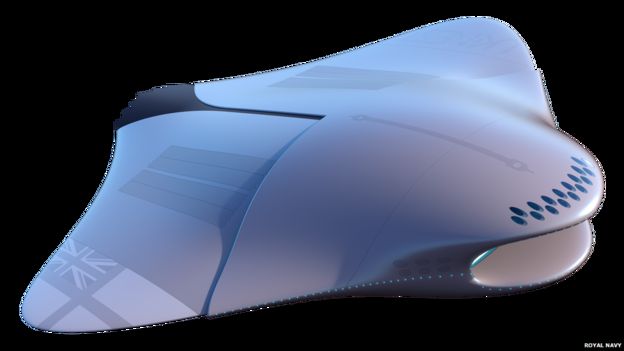 Image copyright RoYAL NAVY
Image copyright RoYAL NAVY With tunnel drive propulsion similar to a Dyson bladeless fan, it could travel at 150 knots, sucking water through the bow and expelling it from the stern.
A crew of 20 would live on board, and the vessel could dock at underwater stations based around the world.
2. Eel unmanned vehicles
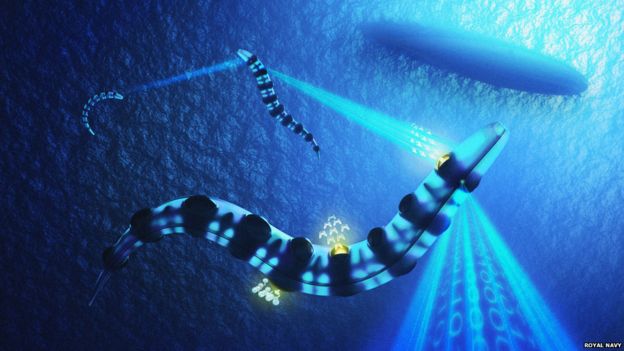 Image copyright ROYAL NAVY
Image copyright ROYAL NAVY Their main purpose would be to eject individual sensor pods that use lasers to communicate with each other, forming an underwater communication network.
3. Dissolvable micro drones
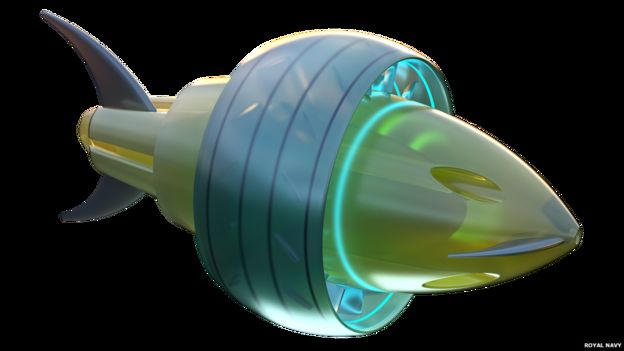 Image copyright ROYAL NAVY
Image copyright ROYAL NAVY They could carry out reconnaissance, shadow foreign submarines or undertake escort duties.
Made from saltwater soluble polymers - like capsules for washing machines - they can be dissolved when secrecy demands.
4. Flying fish drones
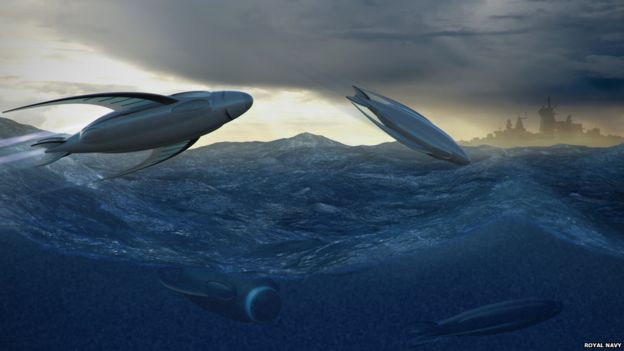 Image copyright ROYAL NAVY
Image copyright ROYAL NAVY Their payloads would include cluster missiles, electromagnetic pulses or shockwave emitters.
Operating in and above the surface of the water, they would be especially hard to detect with radar systems owing to the "noise" created by choppy waters.
If detected, they could immediately use plasma batteries to dive for the safety of the deeps.



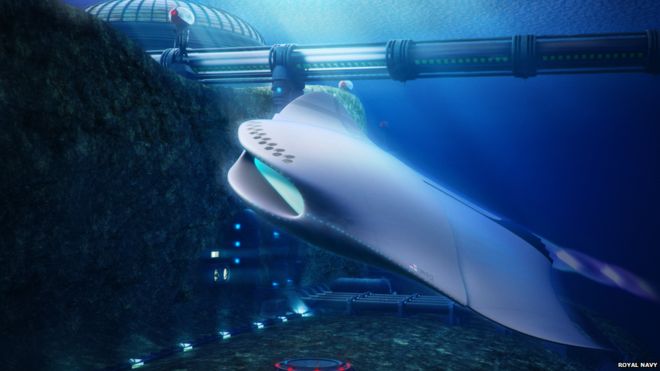
Ingen kommentarer:
Legg inn en kommentar
Merk: Bare medlemmer av denne bloggen kan legge inn en kommentar.